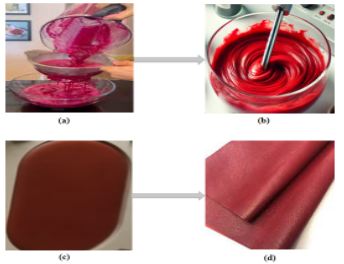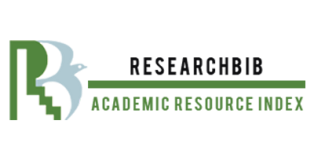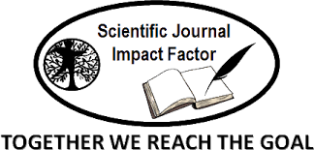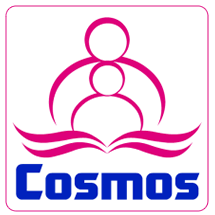Reducing the Environmental Impact of Leather Production and Assessing the Potential of Cactus-Based Vegan Leather
Keywords:
Environmental Impact, Animal Welfare, Cactus Leather, Sustainability, Global ShiftAbstract
Global warming and the environmental and health risks linked to animal-based leather products have increased the demand for sustainable alternatives. Vegan leather has gained attention as a promising solution to these issues, encouraging eco-friendly fashion. To reduce its environmental impact, the leather industry is shifting from animal-derived to plant-based materials. Traditional leather production involves slaughtering over a billion cattle each year, releasing harmful substances like chromium and lead that pollute water sources and threaten public health. This study explores the potential of cactus-based vegan leather as an eco-friendly substitute for conventional leather. The process involved harvesting mature cactus pads, drying them in the sun, and transforming them into a sturdy material that mimics the properties of real leather. Mechanical tests showed that cactus leather offers similar durability, flexibility, and aesthetic appeal to traditional leather. The results emphasize the environmental, economic, and functional advantages of cactus leather, positioning it as a scalable alternative to reduce the negative ecological effects of animal-based leather production.
References
E. Mascot-Gómez, J. Flores, and N. E. López-Lozano, “The seed-associated microbiome of four cactus species from Southern Chihuahuan Desert,” J. Arid Environ., vol. 190, p. 104531, 2021, doi: https://doi.org/10.1016/j.jaridenv.2021.104531.
V. V. S. S. A. K. S. Bhavya, P. Raji, A. Jenifer Selvarani, A. V. Samrot, P. T. M. Javad, “LEATHER PROCESSING, ITS EFFECTS ON ENVIRONMENT AND ALTERNATIVES OF CHROME TANNING,” Int. J. Adv. Res. Eng. Technol., vol. 10, no. 6, pp. 69–79, 2019, [Online]. Available: https://iaeme.com/MasterAdmin/Journal_uploads/IJARET/VOLUME_10_ISSUE_6/IJARET_10_06_009.pdf
K. . T. R. Sreeram, “Sustaining tanning process through conservation, recovery and better utilization of chromium,” Resour. Conserv. Recycl., vol. 38, no. 3, pp. 185–212, 2003, doi: https://doi.org/10.1016/S0921-3449(02)00151-9.
J. R. Rao et al., “Pickle-free chrome tanning using a polymeric synthetic tanning agent for cleaner leather processing,” Clean Technol. Environ. Policy 2004 64, vol. 6, no. 4, pp. 243–249, Jan. 2004, doi: 10.1007/S10098-003-0240-9.
J. Kanagaraj, K. C. Velappan, N. K. Chandra Babu, and S. Sadulla, “Solid wastes generation in the leather industry and its utilization for cleaner environment - A review,” J. Sci. Ind. Res. (India)., vol. 65, no. 7, pp. 541–548, Jul. 2006, doi: 10.1002/CHIN.200649273.
S. Dixit, A. Yadav, P. D. Dwivedi, and M. Das, “Toxic hazards of leather industry and technologies to combat threat: a review,” J. Clean. Prod., vol. 87, pp. 39–49, 2015, doi: https://doi.org/10.1016/j.jclepro.2014.10.017.
M. G. Arellano-Sánchez, C. Devouge-Boyer, M. Hubert-Roux, C. Afonso, and M. Mignot, “Chromium Determination in Leather and Other Matrices: A Review,” Crit. Rev. Anal. Chem., vol. 52, no. 7, pp. 1537–1556, 2022, doi: 10.1080/10408347.2021.1890545.
L. S. Cornelia Wjunow, Kim-Laura Moselewski, Zoe Huhnen, Selina Sultanova, “Sustainable Textiles from Unconventional Biomaterials—Cactus Based,” Eng. Proc, vol. 37, no. 1, p. 58, 2023, doi: https://doi.org/10.3390/ECP2023-14652.
Khurram Shahzad Ayub, “Unveiling the Morphology and Composition of Heterogeneous Co, Zn and ferrite Catalysts for Efficient Catalysis,” J. Appl. Sci. Emerg. Technol., vol. 1, no. 2, 2023, [Online]. Available: https://jaset.uog.edu.pk/index.php/jaset/article/view/16
L. M. and S. D. Dawar Butt, “CO2 Emissions from Pakistan’s Energy sector,” CREA. Accessed: Mar. 16, 2025. [Online]. Available: https://energyandcleanair.org/publication/co2-emissions-from-pakistans-energy-sector/
S. R. Ghafoor, Abdul, Manan Aslam, “Determinants of Leather Goods Exports: A Case of Pakistan,” Journal of Business & Economics. Accessed: Mar. 16, 2025. [Online]. Available: https://www.researchgate.net/publication/257942065_Determinants_of_Leather_Goods_Exports_A_Case_of_Pakistan
A. A. Chandio, J. Yuansheng, and H. Magsi, “Agricultural Sub-Sectors Performance: An Analysis of Sector-Wise Share in Agriculture GDP of Pakistan,” Int. J. Econ. Financ., vol. 8, no. 2, p. 156, Jan. 2016, doi: 10.5539/IJEF.V8N2P156.
M. Khwaja, “Environmental Impacts of Tanning and Leather Products Manufacturing Industry in NWFP (Pakistan).” Sustainable Development Policy Institute, Jan. 01, 2000. Accessed: Mar. 16, 2025. [Online]. Available: https://www.academia.edu/54164465/Environmental_Impacts_of_Tanning_and_Leather_Products_Manufacturing_Industry_in_NWFP_Pakistan_
R. B. Malabadi, K. P. Kolkar, R. K. Chalannavar, and H. Baijnath, “Plant-based leather production: An update,” World J. Adv. Eng. Technol. Sci., vol. 14, no. 1, pp. 031–059, Jan. 2025, doi: 10.30574/WJAETS.2025.14.1.0648.
K. S. Ayub et al., “Nonthermal plasma catalysis using ferrites as an efficient catalyst for toluene degradation,” Res. Chem. Intermed., vol. 49, no. 6, pp. 2399–2415, Jun. 2023, doi: 10.1007/S11164-023-05010-W/METRICS.
M. S. Ummah, “中国の都市高齢者における主観的健康感の構造に関する研究,” 民族衛生. Accessed: Mar. 16, 2025. [Online]. Available: https://www.jstage.jst.go.jp/article/jshhe1931/72/1/72_1_3/_article/-char/ja/
R. S. Bikram Jit Singh, Ayon Chakraborty, “A systematic review of industrial wastewater management: Evaluating challenges and enablers,” J. Environ. Manage., vol. 348, p. 119230, 2023, doi: https://doi.org/10.1016/j.jenvman.2023.119230.
A. Nefzaoui, “Opuntia ficus-indica productivity and ecosystem services in arid areas,” Italus Hortus, vol. 25, no. 3, pp. 29–39, 2018, doi: 10.26353/J.ITAHORT/2018.3.2939.
M. P. S. Zoé O. G. Schyns, “Mechanical Recycling of Packaging Plastics: A Review,” Macromol. Rapid Commun, 2021, doi: https://doi.org/10.1002/marc.202000415.
Y. M. Faten Mannai, Hanedi Elhleli, Mohamed Ammar, Raphaël Passas, Elimame Elaloui, “Green process for fibrous networks extraction from Opuntia (Cactaceae): Morphological design, thermal and mechanical studies,” Ind. Crops Prod., vol. 126, pp. 347–356, 2018, doi: https://doi.org/10.1016/j.indcrop.2018.10.033.
Ian Oberem, “IHT Agri-Holdings: Unveiling the Future of Sustainable Fashion: Nopal Cactus and Vegan Leather,” I. H. T. Agri-holdings, 2024, [Online]. Available: https://www.ihtsa.co.za/sitepad-data/uploads/2024/02/IHT-Agri-Holdings-Unveiling-the-Future-of-Sustainable-Fashion-Nopal-Cactus-and-Vegan-Leather.pdf
J.-I. H. Muhammad Saif Ur Rehman, Naim Rashid, Ameena Saif, Tariq Mahmood, “Potential of bioenergy production from industrial hemp (Cannabis sativa): Pakistan perspective,” Renew. Sustain. Energy Rev., vol. 18, pp. 154–164, 2013, doi: https://doi.org/10.1016/j.rser.2012.10.019.
“The Environmentally Frendly Leather Desserto Made of Nopal in Mexico,” ideass, 2019, [Online]. Available: https://www.ideassonline.org/public/pdf/NopalLeatherMexico-ENG.pdf
SupplyCompass, “Sustainable Material Guide // 03 Leather Alternatives,” Refashion fr, 2020, [Online]. Available: https://refashion.fr/eco-design/sites/default/files/fichiers/Sustainable Material Guide Leather Alternatives.pdf
A. A. B. Girmaw Yeshanbel Kefale, Zerihun Teshome Kebede, “A Systematic Review on Potential Bio Leather Substitute for Natural Leather,” J. Eng., 2023, doi: https://doi.org/10.1155/2023/1629174.
Nabanita Saha; Fahanwi Asabuwa Ngwabebhoh; Hau Trung Nguyen; Petr Saha, “Environmentally friendly and animal free leather: Fabrication and characterization,” AIP Conf. Proc., vol. 2289, 2020, doi: https://doi.org/10.1063/5.0028467.
N. M. S. N. Suderman, M.I.N. Is, “The effect of plasticizers on the functional properties of biodegradable gelatin-based film: A review,” Food Biosci., vol. 24, pp. 111–119, 2018, doi: https://doi.org/10.1016/j.fbio.2018.06.006.
O. Y. Bai Zhongxue, Xuechuan Wang, Manhui Zheng, “Leather for flexible multifunctional bio-based materials: a review,” J. Leather Sci. Eng., vol. 4, no. 1, 2022, doi: 10.1186/s42825-022-00091-6.
B. B. Varee Tyagi, “Role of plasticizers in bioplastics,” Food Process. Technol., vol. 7, no. 4, pp. 128–130, 2019, doi: 10.15406/mojfpt.2019.07.00231.
J. P. K. Richard Opoku, George Y. Obeng, Louis K. Osei, “Optimization of industrial energy consumption for sustainability using time-series regression and gradient descent algorithm based on historical electricity consumption data,” Sustain. Anal. Model., vol. 2, p. 100004, 2022, doi: https://doi.org/10.1016/j.samod.2022.100004.
L. Z. & A. O. F. Brugnoli, K. Sena, “A global study on the Life Cycle Assessment (LCA) of the modern cow leather industry,” Discov. Sustain., vol. 6, no. 80, 2025, doi: https://doi.org/10.1007/s43621-025-00798-6.
F. Brugnoli and I. Kráľ, “Life Cycle Assessment , Carbon Footprint in Leather Processing,” Leather Leather Prod. Ind. Panel, vol. 48, 2012, [Online]. Available: https://leatherpanel.org/sites/default/files/publications-attachments/lca_carbonfootprint_lpm2012.pdf
B. F. Rafael Laurenti, Michael Redwood, Rita Puig, “Measuring the Environmental Footprint of Leather Processing Technologies,” J. Ind. Ecol., 2016, doi: https://doi.org/10.1111/jiec.12504.

Downloads
Published
How to Cite
Issue
Section
License
Copyright (c) 2025 50sea

This work is licensed under a Creative Commons Attribution 4.0 International License.




















